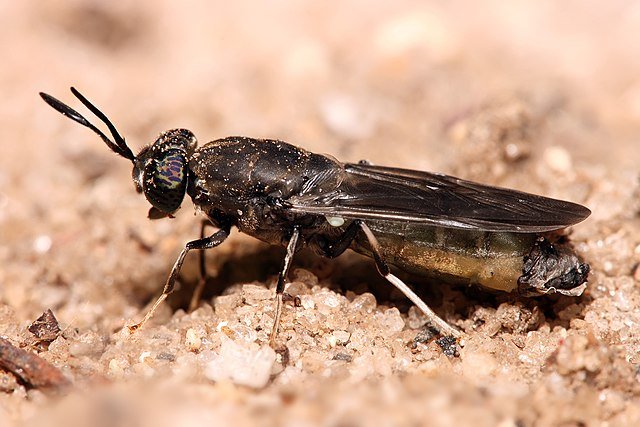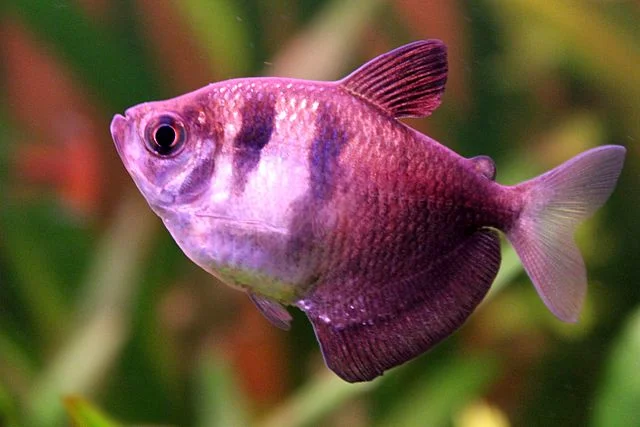
The aquaculture industry faces a significant environmental challenge in the form of aquaculture solid waste (ASW). This nutrient-rich material, if not effectively managed, can have detrimental effects on the environment.
In response to this challenge, scientists from the Leibniz Institute for Agricultural Engineering and Bioeconomy (ATB), South East Technological University, Institute of Inland Fisheries Potsdam-Sacrow, and the University of Bologna published an innovative study exploring the transformative potential of black soldier fly (BSF) larvae (Hermetia illucens) to convert solid waste from the aquaculture industry into valuable biomass.
Solid Waste Composition
- 1 Solid Waste Composition
- 2 The Experiment: Unveiling the Power of BSF Larvae
- 3 Nutrient Retention and Feed Conversion
- 4 Finding the Sweet Spot: 75ASW Substrate
- 5 Dual Benefit: Waste Reduction and Biomass Production
- 6 Effect of Different Substrates on Frass Quality
- 7 Conclusion
- 8 Entradas relacionadas:
Solid waste from aquaculture activities is primarily composed of unconsumed feed, fish feces, and metabolic products. It is rich in nitrogen, phosphorus, and organic matter.
If sludge is not removed, it can accumulate in breeding ponds, causing eutrophication and generating greenhouse gases. Traditionally, intensive and semi-intensive aquaculture systems have low efficiency in terms of nutrient assimilation and recovery.
A solution to this issue is to combine waste treatment with nutrient recovery through the bioconversion of aquaculture sludge by insects.
The Experiment: Unveiling the Power of BSF Larvae
It has been reported that black soldier fly larvae can efficiently grow on organic waste, converting it into high-quality protein for animal feed.
In this study, researchers formulated five substrates, each comprising chicken feed supplemented with varying proportions of fresh ASW (0%, 25%, 50%, 75%, 100%). The goal was to evaluate larval growth and waste bioconversion efficiency under different conditions.
Researchers used drum filter sludge from a pilot-scale recirculating aquaculture system for lucioperch (Sander lucioperca) breeding.
Stay Always Informed
Join our communities to instantly receive the most important news, reports, and analysis from the aquaculture industry.
Nutrient Retention and Feed Conversion
According to the study results, black soldier fly larvae can effectively convert aquaculture sludge into nutrients, thereby reducing potential pollution.
The results revealed significant nutrient retention in the 100ASW substrate, with nitrogen (N) at 23.25%, carbon (C) at 21.94%, and sulfur (S) at 12.20%. Despite a high feed conversion ratio (1.78), limited feeding rate and a significant amount of indigestible fibers led to reduced larval growth. This highlights the delicate balance between nutrient-rich content and optimal larval development.
Finding the Sweet Spot: 75ASW Substrate
As ASW content decreased, fibers and ash reduced, non-fibrous carbohydrates and the C/N ratio increased, and larval growth improved. However, higher larval metabolic activity suggested greater nutrient loss to the environment.
The 75ASW substrate emerged as the star performer, demonstrating optimal larval production, waste reduction, and nutrient assimilation.
Dual Benefit: Waste Reduction and Biomass Production
The study underscores the dual benefit of using BSF larvae in managing fresh ASW. Not only does it reduce waste, but it also produces valuable insect biomass. The 75ASW substrate, aligning with optimal BSF rearing substrates reported in literature, represents a promising solution to the environmental challenges posed by aquaculture waste.
Additionally, researchers studied the quality of the raised insects. “In the present study, the protein content of the larvae varied from 33 to 50%. However, the lower protein content in 75ASW can be attributed to the higher proportion of carbohydrates and lipids.”
Effect of Different Substrates on Frass Quality
Frass, the excrement of insects, is a material generated by insect-based waste management systems. It consists of nutrient-rich material that, if not handled correctly, can result in a significant environmental impact.
Current practices include using frass as a conditioner/fertilizer in agriculture.
“As all substrates used in the present study were rich in proteins, nitrogen-rich frass could be expected. On the other hand, as all substrates except 100ASW were rich in carbohydrates, it is reasonable that the only frass with a high phosphorus content was from the 100ASW treatment,” the scientists reported.
Conclusion
In conclusion, this study sheds light on the remarkable potential of black soldier fly larvae to transform aquaculture waste management.
The scientists conclude that their study’s results clearly demonstrate that fresh aquaculture solid waste can be utilized for BSF larval rearing, combining biomass production and nutrient recovery with waste management and pollution reduction.
By carefully balancing nutrient content, substrate composition, and larval growth, aquaculturists can harness the natural capabilities of BSF larvae to achieve sustainable waste reduction and biomass production.
Funding for open access to the study was provided by Projekt DEAL, while the German Federal Ministry of Food and Agriculture (BMEL) through the Federal Office for Agriculture and Food (BLE) and the BlueBio ERA-NET COFUND on the Blue Bioeconomy—Unlocking the Potential of Aquatic Bioresource in the Horizon 2020 Program funded the study’s execution.
Contact
Oliver K. Schlüter
Department of Systems Process Engineering
Leibniz Institute for Agricultural Engineering and Bioeconomy (ATB)
Max-Eyth-Allee 100, 14469, Potsdam, Germany
Email: oschlueter@atb-potsdam.de
Reference (open access)
Rossi, G., Ojha, S., Müller-Belecke, A. et al. Fresh aquaculture sludge management with black soldier fly (Hermetia illucens L.) larvae: investigation on bioconversion performances. Sci Rep 13, 20982 (2023). https://doi.org/10.1038/s41598-023-48061-0
Editor at the digital magazine AquaHoy. He holds a degree in Aquaculture Biology from the National University of Santa (UNS) and a Master’s degree in Science and Innovation Management from the Polytechnic University of Valencia, with postgraduate diplomas in Business Innovation and Innovation Management. He possesses extensive experience in the aquaculture and fisheries sector, having led the Fisheries Innovation Unit of the National Program for Innovation in Fisheries and Aquaculture (PNIPA). He has served as a senior consultant in technology watch, an innovation project formulator and advisor, and a lecturer at UNS. He is a member of the Peruvian College of Biologists and was recognized by the World Aquaculture Society (WAS) in 2016 for his contribution to aquaculture.




